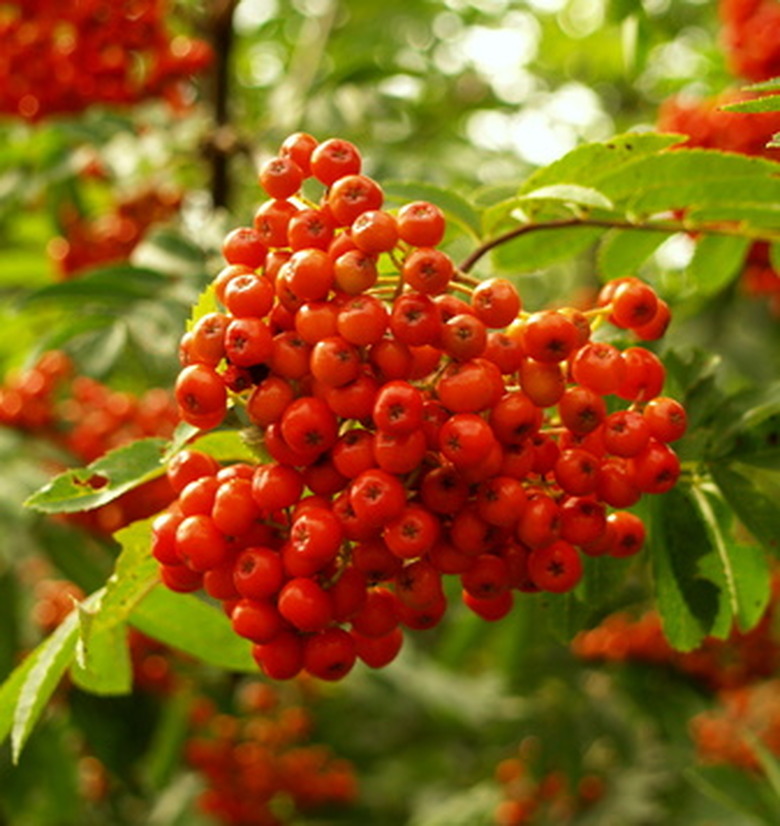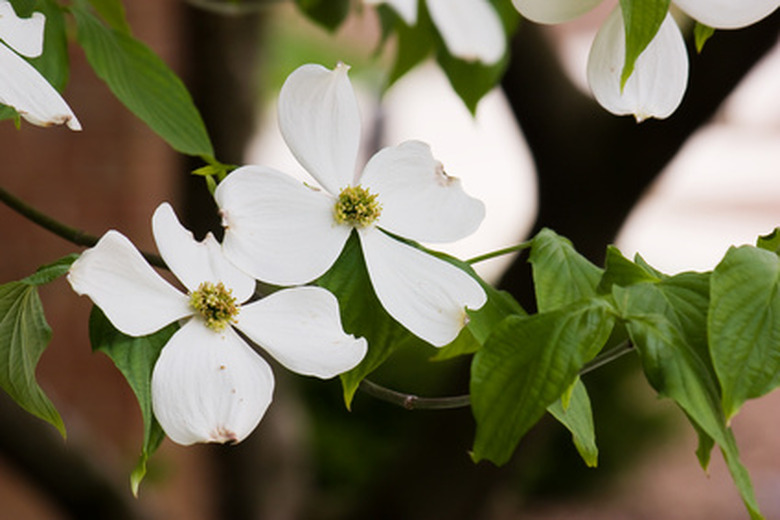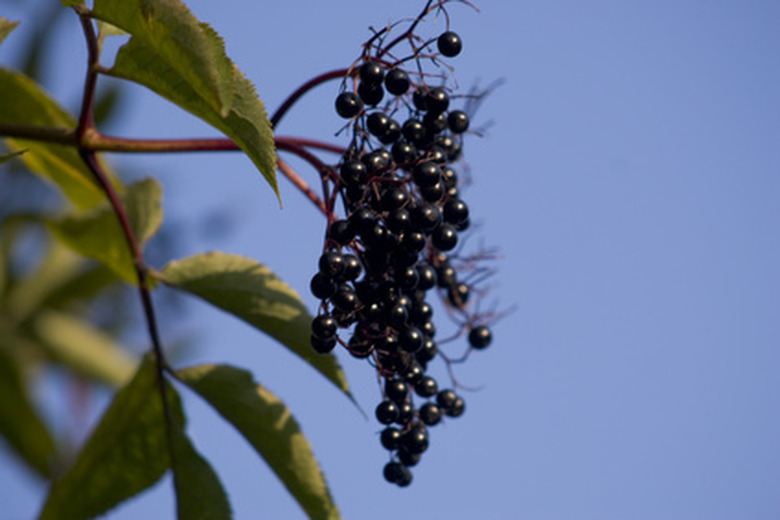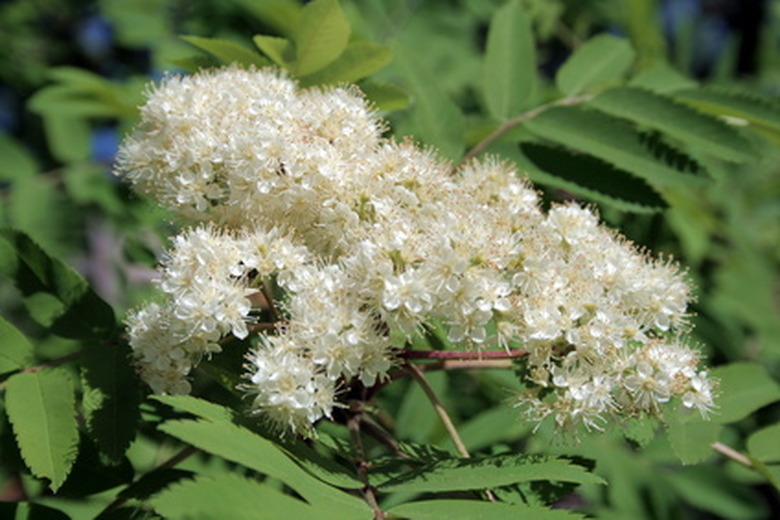Flowering Trees With Berries
Trees take up a sizable position in the landscape. The best ones are those that provide as much year-round interest as possible. Trees that have both attractive flowers and berries are especially useful. Berry-producing trees will draw birds and other wildlife to your garden, while the flowers will attract pollinators.
Dogwood
Dogwoods are one of the most popular small flowering trees. There are different species and varieties, but they range from 10 to 25 feet tall. The common pink flowering dogwood (Cornus florida) is also available with white bracts. The leaves turn red in the fall, along with bright red oblong fruit. The berries of this dogwood are not edible. The smaller Japanese dogwood (Cornus kousa) has smaller bracts, but more of them. The burgundy berries of kousa dogwood are edible for birds and humans. They can be eaten fresh or cooked. The cornelian cherry (Cornus mas) is in the dogwood family, but has clusters of small yellow flowers, instead of bracts. This tree is more prized for its large clusters of bright red, translucent fruit; due to its abundance of berries, this is the best dogwood for the wildlife garden. The fruit can also be harvested and used in jams.
- Trees take up a sizable position in the landscape.
- The common pink flowering dogwood (Cornus florida) is also available with white bracts.
Elderberry
Elderberries (Sambucus) are valuable for their colorful foliage, attractive flower clusters and edible berries. The blue and black berries are used in baking, wine, syrup and jam. The flat umbels of flowers are soaked, and the liquid is used in cosmetics. Red elderberries are not recommended for consumption. The compound leaves of this tree contain numerous thin leaflets, giving it a tropical appearance. The small stature of this vase-shaped tree makes it useful for planting underneath taller trees. Elderberry trees range from 8 to 12 feet tall.
- Elderberries (Sambucus) are valuable for their colorful foliage, attractive flower clusters and edible berries.
- The blue and black berries are used in baking, wine, syrup and jam.
Strawberry Tree
The strawberry tree (Arbutus unedo) is one of the best small evergreen trees. It has thick, glossy, deep-green leaves, and quickly grows 10 to 12 feet tall. The clusters of white, urn-shaped flowers appear in the fall. The round, strawberry-like fruit ripen during the winter months. There can be green, orange and red fruit on the tree at the same time. Birds love the fruit, so there is rarely a problem with messiness. The berries are edible for humans, but have a mealy texture and are usually avoided. In Portugal, the berries are used to make a type of wine called medronhos. As an added bonus, strawberry tree has attractive shredding bark.
- The strawberry tree (Arbutus unedo) is one of the best small evergreen trees.
- The berries are edible for humans, but have a mealy texture and are usually avoided.
Mountain Ash
European mountain ash (Sorbus aucuparia) produces white flowers followed by large clusters of orange berries. These berries are edible, and are high in vitamin C. They are also high in acid and can cause digestive problems. The tree is planted more for ornamental purposes than food value. The cardinal royal variety has bright red berries. Mountain ash can reach 20 to 40 feet tall, depending on the variety. The compound leaves have many thin leaflets, giving the tree a delicate appearance. Birds love the berries, so this tree is ideal in a wildlife garden.
- European mountain ash (Sorbus aucuparia) produces white flowers followed by large clusters of orange berries.
- The compound leaves have many thin leaflets, giving the tree a delicate appearance.




